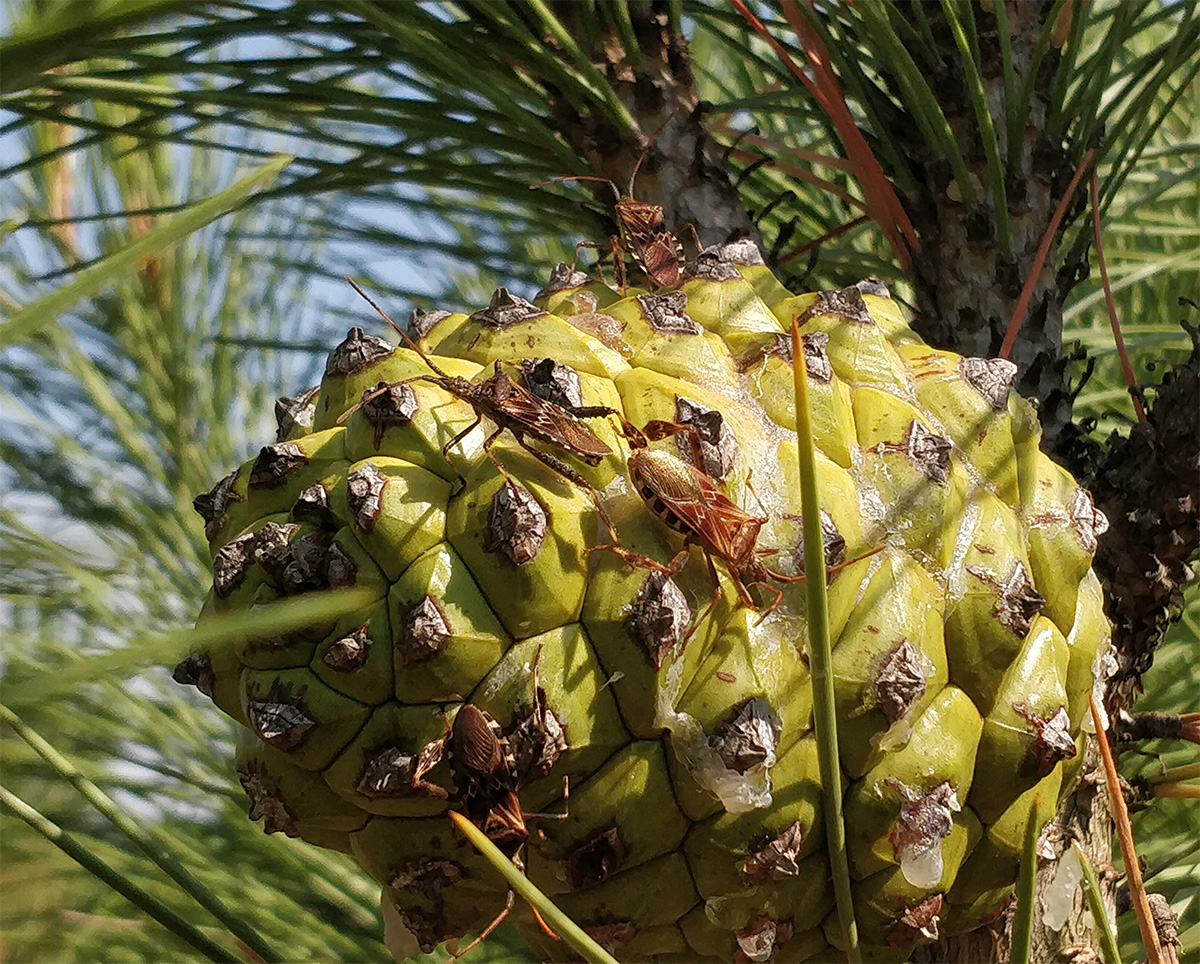Compounds identified for the control of pine seed bug, which causes heavy damages to pine nut production
- Details
- Category: Projects
-
27 Apr 2023
GoPinea, a project to recover the production of the Iberian pine nut, has finished. Among its results, a team from the CSIC's Institute of Advanced Chemistry of Catalonia (IQAC) has obtained compounds that could be used to control the pine seed bug, an invasive insect that is causing major losses in pine nut harvests.
 The GoPinea project aimed to recover pine nut production and investigate the causes of its decline. One of these factors is the Western conifer seed bug (Leptoglossus occidentalis), also called pine seed bug, an invasive insect that feeds on the seeds of conifers.
The GoPinea project aimed to recover pine nut production and investigate the causes of its decline. One of these factors is the Western conifer seed bug (Leptoglossus occidentalis), also called pine seed bug, an invasive insect that feeds on the seeds of conifers.
It was first detected in Spain in 2003, specifically in Catalonia, and since 2013 there has been a significant reduction in Iberian pine nut harvests throughout the state, due to droughts and attacks by this bug.
Carme Quero and Sergio López, from the Research Unit on Bioactive Molecules (RUBAM) at CSIC's Institute of Advanced Chemistry of Catalonia (IQAC-CSIC), have been working on this project. These researchers are specialised in developing pest control strategies based on molecules such as pheromones.
Within the framework of GoPinea, they have studied both the population dynamics of the American bedbug and periods when it actually causes damage, as well as the identification of new compounds involved in its chemical communication.
“If we manage to monitor the population dynamics of the species, knowing when it is present, where and in what densities, it will be possible to use insecticides more rationally”
Recently, a collaboration between the University of Valladolid, the University of California and the University of Greenwich succeeded in identifying a male-specific compound, called leptotriene, which possibly plays a role as an aggregation pheromone, as it is very attractive to insects of both sexes under field conditions.
However, the complex structure of leptotriene and the high cost of the synthesis process do not make it feasible to use this molecule in the short to medium term to monitor and control the bug. For this reason, the IQAC-CSIC researchers set out to find alternative compounds.
After four years of work, they have identified several compounds emitted by the insect that show activity both in laboratory conditions and in the field and that could work to attract and trap the pine seed bugs in traps.
The scientists will now investigate whether these compounds can be used to detect the presence of the pest in a field and therefore to help in its control.

"If we manage to monitor the population dynamics of the species, knowing when it is present, where and in what densities, it will be possible to use insecticides more rationally," says Carmen Quero. The reason, clarifies Sergio López, is that currently the only active substance permitted for the control of the species is deltamethrin, a broad-spectrum insecticide.
Although deltamethrin does not pose any risk to human consumption of the pine nut, it can have a negative impact on beneficial insects, such as pollinators, and on the fauna of the forest.
The scientists will now investigate whether these compounds can be used to detect the presence of the pest in a field and therefore to help in its control.
This research was carried out with the collaboration of citizens. Through social networks, the IQAC team asked people to let them know if they saw high densities of these bugs during autumn, which is when the insect forms large aggregates to hibernate. This made it possible to obtain several hundred specimens to study their biology and isolate the bioactive molecules they emit.
The GoPinea project, which began in 2019, has received funding from the European Agricultural Fund for Rural Development (EAFRD) and the Spanish Ministry of agriculture, fisheries and food.




